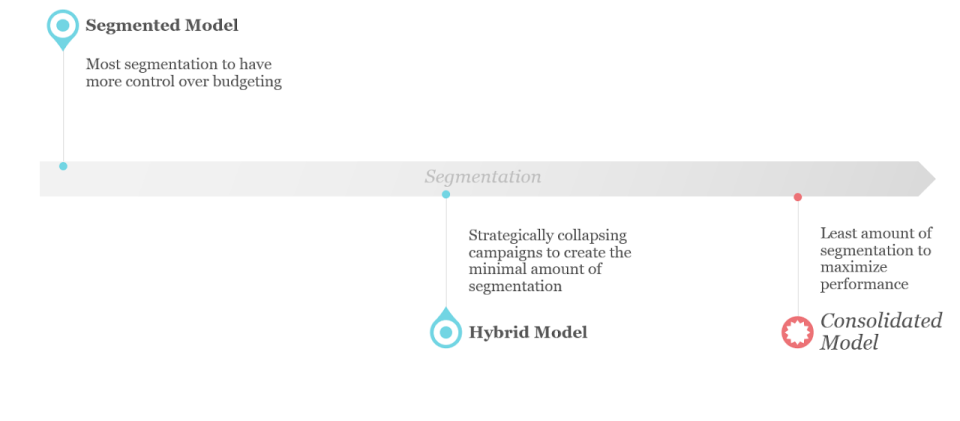According to various market research, the eye care market is predicted to grow into a $78.9 billion industry by 2027. With the rising prevalence of eye disorders and the aging population, the demand for Optometry and Ophthalmology services is also expected to grow. More people are being glued to their smartphones and gadget screens, greatly contributing to the rising prevalence of eye disorders. For instance, 3.3 million Americans over the age of 40, or 1 in 28 people, have complete blindness.
In addition, the introduction of technologies for vision loss treatments, such as laser eye surgery, will also bolster market growth. That predicted growth of the eye care market means it will also attract more providers, thus, tightening the competition. Moreover, private equity consolidations continue ramping up, especially with high-value procedures like cataract surgeries.
What does this mean for eye care providers?
Optometrists and ophthalmologists who want to keep their competitive edge and increase patient volume will need a solid digital marketing campaign–this means investing in high-level strategies like SEO, PPC advertising, Facebook Ads, conversion rate optimization (CRO), reputation management, and marketing analytics.
Providers who want to take their digital marketing for optometrists/ophthalmologists should consider the following best practices:
Boost Your Local SEO
When 46% of Google searches have local intent, you can’t afford to overlook your local SEO campaign. Local visibility is even more critical for healthcare providers since you rely on attracting patients in your geographical area. On a related note, patients also prefer nearby providers due to convenience and ease of access. Thus, eye care specialists must invest in boosting their local SEO campaign.
Below are some strategies that will help boost your practice’s local visibility and attract more patients in your area:
Use Citations & Listings
If you haven’t already, claim local citations and listings for your practice. These directories are typically free to claim and can help Google validate your business and enhance the credibility of your practice. Look for structured directories like the following and populate your listing:
- Yelp
- RateMDs
- WebMD
- Healthgrades
- ZocDoc

Niche-specific local directories, including the American Optometric Association (AOA) and the American Academy of Ophthalmology, are also worth looking into.
Optimize Google Business Profile (GBP)
Another quick and surefire way to improve your local digital presence is by claiming and optimizing your Google Business Profile or GBP (formerly Google My Business). When almost half of 8 billion searches daily have local intent, it would be a big mistake not to claim and optimize your GBP listing. It’s free, and all you need is to supply the following information:
- Name of practice
- Website
- Address
- Working hours
- Phone number
- Email address
- A brief description of your practice
- Photos of practice and staff
In addition, make sure you populate your GBP listing with frequently asked questions or FAQs that answer the patients’ most common inquiries–including accepted insurance, details about your services, and whether you’re accepting new patients.
Build a Location-Based Keyword Strategy
It would be best if you honed in on the local keywords you wish to rank for your local SEO strategy because your sitewide keywords won’t cut it. Therefore, optometry and ophthalmology providers must develop a geographical keyword strategy to compete and dominate the local market.
When doing local keyword research, go for high-intent, low-competition keywords instead of broader phrases that are nearly impossible to rank for. Remember to create your keyword list based on your unique selling propositions (USPs), geographical area, and how patients search for your services. In general, local keywords are:
- High-intent, solution-aware: People who know about their vision problems and are looking for an eye care specialist will use these keywords.
- Location-based: These are keywords with location identifiers (e.g., best optometrist in houston tx).
Use solution-aware and location-based keywords that align with specific services you offer, like “older adult eye care seattle,” for example. Be more detailed and granular as you want because it will help you attract the right patients and deal with less competition.
Create Geo-Personalized Landing Pages
Eye care brands with multiple locations and service areas should have local landing pages for each location. A local landing page is designed to capture patients in a geographical area using location-specific SEO strategies. So when a user searches for a local optometrist or ophthalmologist, they’ll find your eye specialist landing page, where they’ll receive location-optimized content that will answer their questions and eventually convert.
Furthermore, landing pages provide you the opportunity to present unique local content about your location. Besides location-specific content, you can also highlight staff members and physicians at that location, photos of your clinic, and specific patient reviews.
Enhance Your Lead Quality
Next, it’s time to focus on the quality of your leads.
In the competitive field of optometry and ophthalmology, attracting high-quality leads is crucial for practice growth. To improve your patient pipeline with valuable leads that are more likely to convert, consider implementing these lead quality enhancement strategies:
First, take a good look at your existing leads. I always advise my clients to dive into their data and identify where their best patients are coming from and areas that need improvement. When analyzing lead quality for eye care practices, focus on metrics such as:
- How long does it take for a patient to decide on different eye care services?
- What are the click-through rates on your ads and website?
- How well are various treatments converting (think LASIK, cataract surgery, routine eye exams)?
- What’s your customer acquisition cost for different eye care offerings?
- Which types of appointments are contributing the most to your revenue?
Here’s a question I often ask my clients: “Do you know which marketing channels are bringing in your most valuable patients?” If you can’t answer this, it’s time to start tracking.
For eye care practices, call tracking can provide valuable insights, such as identifying trends that result in booked appointments or missed opportunities. This can help refine your messaging and improve your team’s ability to convert inquiries into scheduled visits.
Be alert to signs of poor lead quality, which might include:
- A mismatch between the eye care services patients are seeking and what your practice offers
- Messaging that overpromises or inaccurately describes your eye care services
- Lack of detail about your practice’s specialties, technology, or accepted insurance plans
Also, focus on honing your unique selling proposition (USP) to boost lead quality. What sets your clinic apart from other eye care practices? Do you offer cutting-edge diagnostic technology, specialized treatments, or a particular approach to patient care? Ensure your marketing messages clearly communicate these differentiators.
In addition, invest in high-quality ad creative that resonates with patients seeking your specific eye care services. Generic ads might generate clicks but are less likely to attract the right leads. Create ads that showcase your expertise, highlight your unique offerings, and address common vision concerns.
Remember to nurture your leads effectively. Many eye care decisions can take time, especially for elective procedures like LASIK. Implement a lead nurturing strategy that keeps your practice top-of-mind through routine communication, such as educational emails about eye health or text reminders for annual check-ups.
Build a Patient-Centric Website
A vital piece of your digital marketing is your eye care website. Many of your patients will interact with your brand through your website, essentially making it your digital front door. This is why you need to optimize your website and make it more patient-centric. Patient-centricity means delivering personalized services, solutions, and experiences throughout the patient journey.
Optimize For Speed, UX, and Mobile
Start your eye care website design by optimizing for speed, user interface (UX), and mobile-friendliness. The goal is to provide a comfortable and intuitive user experience for website visitors with design elements like high-quality professional images, sensible menus and layouts, easy-to-read fonts, and prominent call-to-actions (CTAs).
In addition, your ophthalmology website should be quick and easy to navigate. You’re turning away potential patients with a slow-loading website. This is further emphasized by the bounce rate increasing by 32% as page load time goes from one to three seconds.
More importantly, your eye care website must support responsive design and mobile-friendliness. For starters, 59% of the world’s website traffic is from mobile devices, so many of your visitors are on mobile devices. A responsive design means your website will adapt and display correctly whether viewed on a desktop computer or smartphone. Otherwise, you’ll risk providing poor experiences to potential patients.
Essential Content Should Be Discoverable
A good percentage of eye care website visitors have eye-related problems and are looking for answers. In this case, you can establish your website as an authoritative resource for optometry and ophthalmology topics with high-quality, helpful content. This way, you’re aligning your content library with Google’s Helpful Content Update, which aims to promote websites that offer valuable information and answer people’s questions.
Furthermore, your website’s key content should be searchable and easily discovered. This means you should avoid practices preventing users from getting solutions quickly, including burying key content in poorly-designed interfaces, convoluted links, and too many web pages.
Make It Easy for Patients to Convert
When you’ve successfully engaged the patient, ensure you make it easy for them to contact your clinic for questions and set an appointment. Use prominent CTA buttons, chatbots, live chat software, and tap-to-call functions to make it easy for visitors to contact your office.
Moreover, consider investing in patient scheduling programs like RXNT, AthenaONE, and DrChrono to coordinate physician availability with patient appointment requests and confirm available time slots. A patient scheduling system will drastically lower the volume of phone calls, giving your staff more time to deliver better care.
Optimize Your Google Ads Campaign
Google Ads or PPC marketing remains one of the fastest ways to build brand awareness and attract bottom of funnel (BOF) leads–people ready to book an appointment with an eye care doctor. With a fully-realized Google Ads campaign, eye care specialists can reach a wider audience and put their practice in front of high-value patients through the SERPs.
Below are several best practices for optimizing your PPC marketing campaign:
Revisit Your Account Structure
How you structure your Google Ads will enable you to control how you want your PPC ads to be displayed and when and where you want them to show up–which can help improve your Quality Score. The proper account structure will get you organized and able to optimize.
You can benefit the most from a hybrid account structure if you have multi-location optometry or ophthalmology practice. It’s a structure in the middle of the modern Google Ads account spectrum, giving you the best qualities of consolidated and segmented accounts.
On one end, your account benefits from tighter budget control and granular targeting, often by location with segmented accounts (e.g., best corrective eye surgery myrtle beach, oculoplastic surgeon washington dc area). Meanwhile, the consolidated account spectrum helps maximize ad impressions and leverage Google’s smart bidding feature.

PPC Best Practices
After determining the account structure that works for you, you may launch your campaign and let it run to collect data for optimization. As that goes on, you should create landing pages for each location with custom content personalized for eye care patients.
Eye care doctors can benefit from running a full-funnel paid media campaign to capture leads from all stages of the patient journey. However, the primary focus of your campaign is to capture high-quality BOF leads before moving up the funnel.
In addition, keep in mind that PPC requires ongoing maintenance and constant optimization. To ensure long-term success, keep your ads fresh and compelling by refreshing ad copies, CTAs, creatives, and offers. For instance, you can switch and try a different ad image or a more intensive approach like overhauling your ad copy and offers.
Consider Google Performance Max for Eye Care Marketing
Apart from Google Ads, consider investing in Google PMax for a more comprehensive approach. Google’s Performance Max (PMax) can be a powerful tool for optometrists and ophthalmologists looking to expand their digital marketing reach. This campaign type allows you to serve ads across all of Google’s inventory, including Search, Display, YouTube, and Maps–particularly relevant channels for patients seeking eye care services.
When setting up a PMax campaign for your eye care practice, keep these key points in mind:
- Set meaningful conversion goals: Instead of focusing solely on lead generation metrics like form submissions or calls, align your PMax campaign with more significant conversion actions. For an eye care practice, this might include booked appointments, completed first visits, or even lifetime value metrics for new patients.
- Provide high-quality assets: To maximize PMax’s multi-channel approach, upload a variety of high-quality assets. This should include engaging videos showcasing your practice and staff, professional photos of your facility and satisfied patients, and compelling text ads highlighting your services and expertise in eye care.
- Leverage offline conversion tracking: To truly optimize your PMax campaigns, implement offline conversion tracking. This lets you feed data about which leads turned into actual patients back to Google’s algorithms, helping them find more high-quality prospects like your best clients.
- Use audience signals: While PMax uses Google’s AI to find potential patients, you can guide it by providing audience signals. For an eye care practice, this might include interests related to vision health, previous visitors to your website, or customer lists of past patients.
- Monitor and adjust: Keep a close eye on your PMax campaign’s performance. Look for trends in which types of patients or services are driving the most valuable conversions. Use this information to refine your strategy and potentially inform other marketing efforts.
In my experience, PMax complements your search campaigns beautifully when done right. It reaches patients at different decision stages. Think about it: search campaigns catch those “LASIK surgeon near me” searches–that’s great. But PMax? It connects you with folks still researching, maybe watching videos about vision correction or reading eye health articles.
As the experts always say, “Don’t just chase today’s appointments. Nurture tomorrow’s patients.” PMax lets you do exactly that.
Leverage Facebook Ad Marketing
Eye care service providers must have a robust Facebook Ads campaign to improve patient engagement, enhance local reputation, and develop brand awareness.
For starters, your Facebook Ads marketing campaign should start with building full-funnel strategies. This means having an intimate understanding of a consumer’s typical journey to become a patient and how to attract leads during each stage. For Facebook Ads marketing, traffic falls into three categories: awareness, consideration, and decision.
For example, to capture the top of funnel (TOF) leads in the awareness phase, you can use social media carousel infographics about common eye disorders and diseases or a downloadable PDF about vision loss.
Meanwhile, you can convert patients in the decision-making stage with call-to-action ads. This is where Facebook’s Instant Experiences shine, by engaging patients with multimedia content like photos and Fullscreen videos. Regardless of your approach, start your optimization with BOF leads and work your way up the funnel.
Manage Your Online Reputation
Did you know 95% of consumers read reviews before buying a product or service? What about that over 81% of customers will check Google Reviews first before engaging with the brand? These statistics emphasize the importance of having a positive online reputation, which is even more relevant for healthcare providers and doctors.
Online Reputation Management Best Practices
The best way to get more reviews is to ask patients directly after every appointment. Train your front-facing staff members about the best practices for collecting patient reviews. Explain to patients how their feedback and thoughts will improve the quality of care and also help enhance your online reputation. Satisfied patients and regulars will happily help you out following a good experience.
Next, ensure your patients have multiple channels to leave their reviews. You can offer easy-to-complete methods like short patient surveys and follow-up emails. The more streamlined your review collection process is, the more likely patients will leave their reviews. Lastly, consider investing in a patient review generation system like Birdeye or Podium.

Conclusion
Ultimately, long-term success in digital marketing for optometrists and ophthalmologists comes down to patient-centricity and how you can offer first-rate digital experiences. In summary, ensure you have a patient-centric website optimized for mobile devices. In addition, leverage Google Ads, PMax, and Facebook ads to build brand awareness and capture high-quality BOF leads. Moreover, don’t ignore the quality of your leads. Lastly, boost your digital footprint with local SEO and online reputation management, and dominate the local eye care market.

